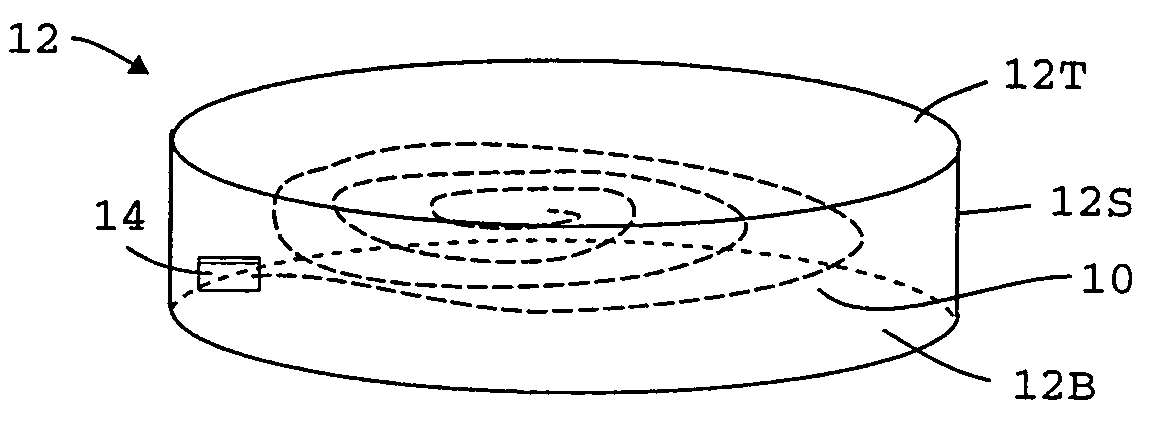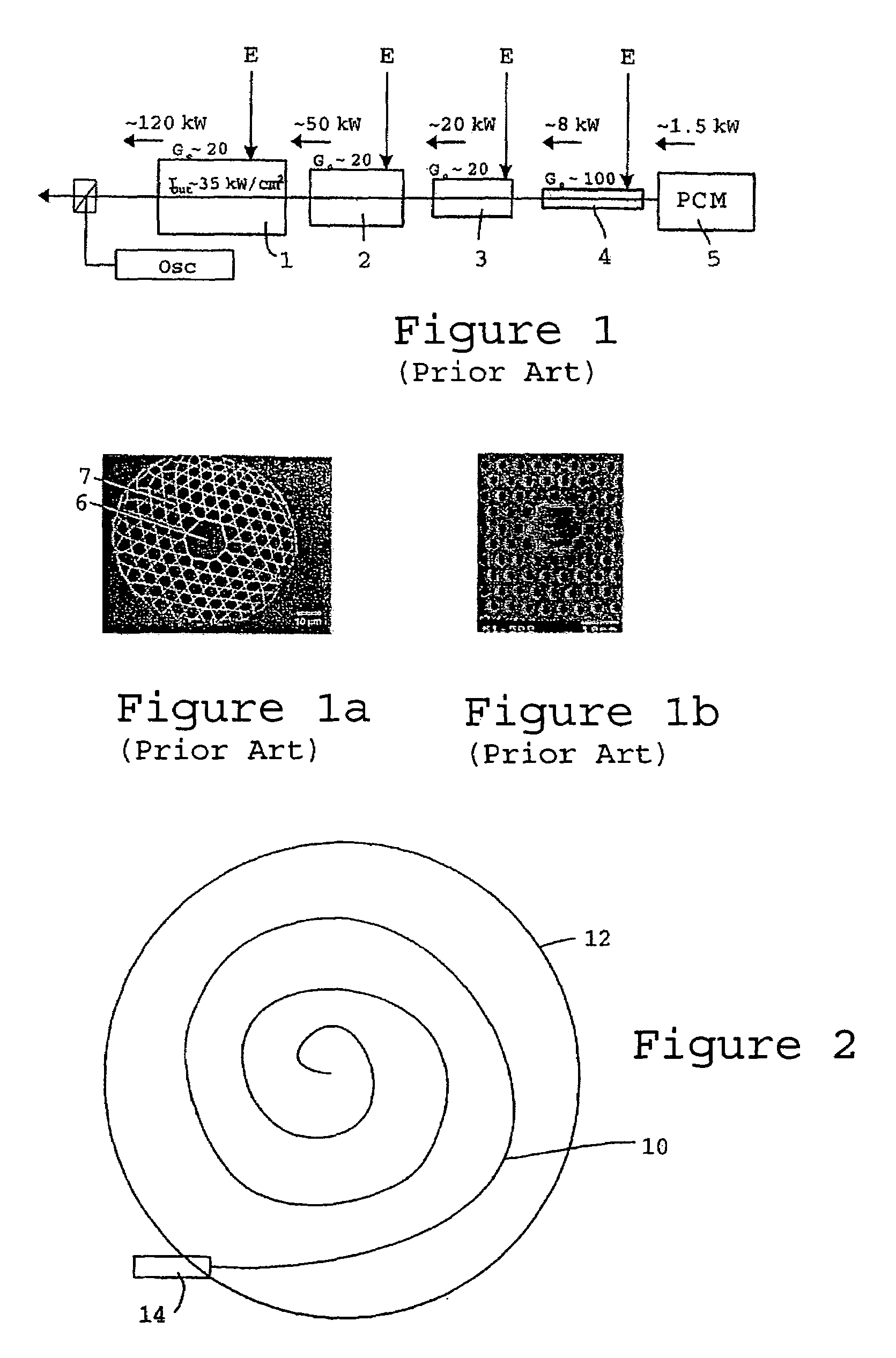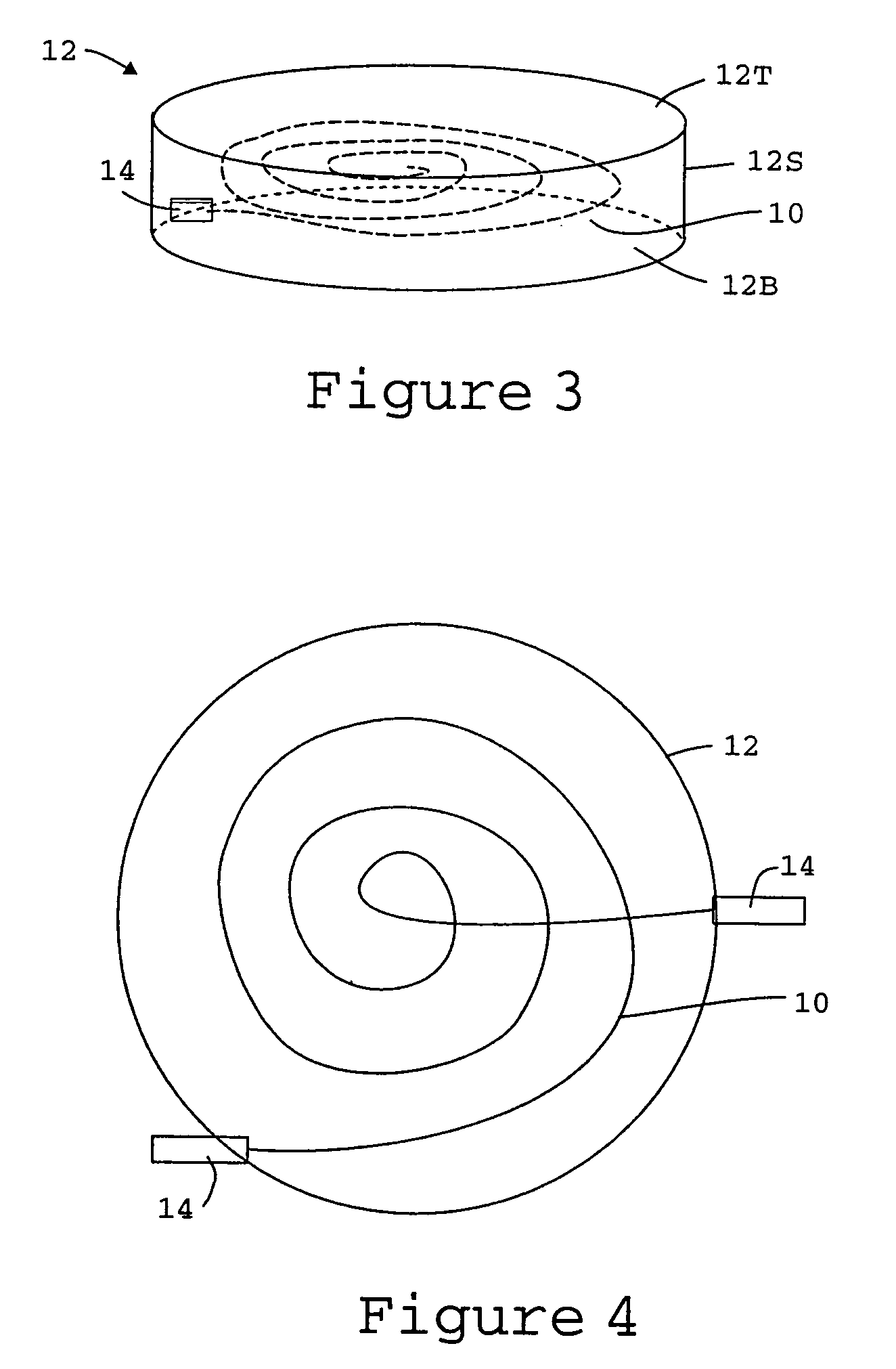Compact phase-conjugate mirror and other optic devices
a phase-conjugate mirror and optical device technology, applied in the direction of optical waveguide light guide, optical fibre with polarisation, instruments, etc., can solve the problems of limiting such devices to glass cores and a very limited number, unsuitable guiding structures for low-index media, and several limitations of nonlinear media
- Summary
- Abstract
- Description
- Claims
- Application Information
AI Technical Summary
Problems solved by technology
Method used
Image
Examples
Embodiment Construction
[0022]This disclosure describes a power-scalable Stimulated Brillouin Scattering (SBS) phase conjugate mirror (PCM). This passive PCM utilizes SBS in a novel structure: a multi-spatial mode, polarization-maintaining, gas-filled, hollow-core photonic crystal fiber (HC-PCF). This novel HC-PCF waveguide now enables realization of the simplest and most elegant PCM approach, SBS, in a gas-filled, guided-wave structure. FIGS. 1, 1a and 1b depict a representative PC-MOPA schematic and end views of HC-PCFs by Benabid and the University of Bath. Having the potential for rapid technology insertion into the tens-of-kilowatt laser systems currently under development, the HC-PCF PCM provides the technical community with a viable alternative technology candidates relative to currently pursued technologies, such as “loop” PCMs, etc.
[0023]There are several variants of the basic geometry. For example, the PCM can be realized using a self-pumped configuration, where only a single beam is incident ont...
PUM
 Login to View More
Login to View More Abstract
Description
Claims
Application Information
 Login to View More
Login to View More - R&D
- Intellectual Property
- Life Sciences
- Materials
- Tech Scout
- Unparalleled Data Quality
- Higher Quality Content
- 60% Fewer Hallucinations
Browse by: Latest US Patents, China's latest patents, Technical Efficacy Thesaurus, Application Domain, Technology Topic, Popular Technical Reports.
© 2025 PatSnap. All rights reserved.Legal|Privacy policy|Modern Slavery Act Transparency Statement|Sitemap|About US| Contact US: help@patsnap.com



